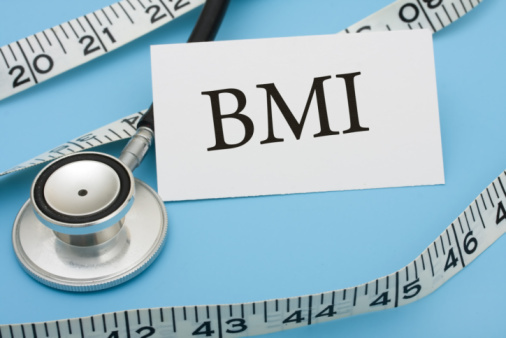What is BMI?
Body Mass Index (BMI) is a number calculated from a person's weight and height. BMI is a fairly reliable indicator of body fatness for most people.
How is BMI used?
BMI is used as a screening tool to identify possible weight problems for adults. However, BMI is not a diagnostic tool. For example, a person may have a high BMI. However, to determine if excess weight is a health risk, a healthcare provider would need to perform further assessments. These assessments might include skin fold thickness measurements (with calipers), underwater weighing, bioelectrical impedance, dual-energy x-ray absorptiometry (DXA), evaluations of diet, physical activity, family history, and other appropriate health screenings. However, these methods are not always readily available, and they are either expensive or need highly trained personnel. Calculating BMI is one of the best methods for population assessment of overweight and obesity. Because calculation requires only height and weight, it is inexpensive and easy to use for clinicians and for the general public.
How is BMI calculated and interpreted?
Calculation of BMI
BMI is calculated the same way for both adults and children. The calculation is based on the following formulas:
|
Measurement Units |
Formula and Calculation |
|
Kilograms and meters (or centimeters) |
Formula: weight (kg) / [height (m)]2 |
Interpretation of BMI for adults
For adults 20 years old and older, BMI is interpreted using standard weight status categories that are the same for all ages and for both men and women. For children and teens, on the other hand, the interpretation of BMI is both age- and sex-specific.
The standard weight status categories associated with BMI ranges for adults are shown in the following table.
|
BMI |
Weight Status |
|
Below 18.5 |
Underweight |
|
18.5 – 24.9 |
Normal |
|
25.0 – 29.9 |
Overweight |
|
30.0 and Above |
Obese |
How reliable is BMI as an indicator of body fatness?
The correlation between the BMI number and body fatness is fairly strong; however the correlation varies by sex, race, and age. These variations include the following examples: 3, 4
- At the same BMI, women tend to have more body fat than men.
- At the same BMI, older people, on average, tend to have more body fat than younger adults.
- Highly trained athletes may have a high BMI because of increased muscularity rather than increased body fatness.
For assessing someone's likelihood of developing overweight- or obesity-related diseases, the National Heart, Lung, and Blood Institute guidelines recommend looking at two other predictors:
- The individual's waist circumference (because abdominal fat is a predictor of risk for obesity-related diseases).
- Other risk factors the individual has for diseases and conditions associated with obesity (for example, high blood pressure or physical inactivity).
Overweight and obese individuals are at increased risk for many diseases and health conditions, including the following: 6
- Hypertension
- Dyslipidemia (for example, high LDL cholesterol, low HDL cholesterol, or high levels of triglycerides)
- Type 2 diabetes
- Coronary heart disease
- Stroke
- Gallbladder disease
- Osteoarthritis
- Sleep apnea and respiratory problems
- Some cancers (endometrial, breast, and colon)
- source:
1Mei Z, Grummer-Strawn LM, Pietrobelli A, Goulding A, Goran MI, Dietz WH. Validity of body mass index compared with other body-composition screening indexes for the assessment of body fatness in children and adolescents. American Journal of Clinical Nutrition 2002;7597–985.
2Garrow JS and Webster J. Quetelet's index (W/H2) as a measure of fatness. International Journal of Obesity 1985;9:147–153.
3Prentice AM and Jebb SA. Beyond Body Mass Index. Obesity Reviews. 2001 August; 2(3): 141–7.
4Gallagher D, et al. How useful is BMI for comparison of body fatness across age, sex and ethnic groups? American Journal of Epidemiology 1996;143:228–239.
5World Health Organization. Physical status: The use and interpretation of anthropometry. Geneva, Switzerland: World Health Organization 1995. WHO Technical Report Series.
 English
English فارسی
فارسی 
